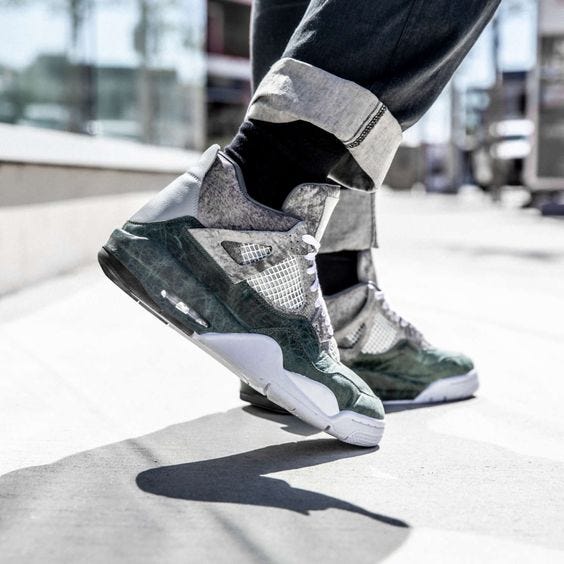
Hermes Birkin bags, Louis Vuitton trunks, and Goyard luggage are just a few of the things of desire that have traditionally defined the wealthy and famous’s status. These are trendy products that our parents and their parents’ generation admire now. The category was going to alter in the recent two decades, with the rise of Millenials and Gen Z. Today, as in recent years, millennials and Generation Z are looking for a different type of status symbol: streetwear and sneakers.
In previous years, this category and culture of sneakers were not as popular. People used to believe that clothing and sneakers were only for a certain type of individual, but collaborations between designer brands like Louis Vuitton and Christian Dior and streetwear labels like Supreme or Nike have changed that. The increased market value of labels such as Off-White, Yeezy, and FOG has also contributed to the shift, reflecting consumer demand as well as the perceived status consumer and “cool” element of those seen in the most exclusive drops.
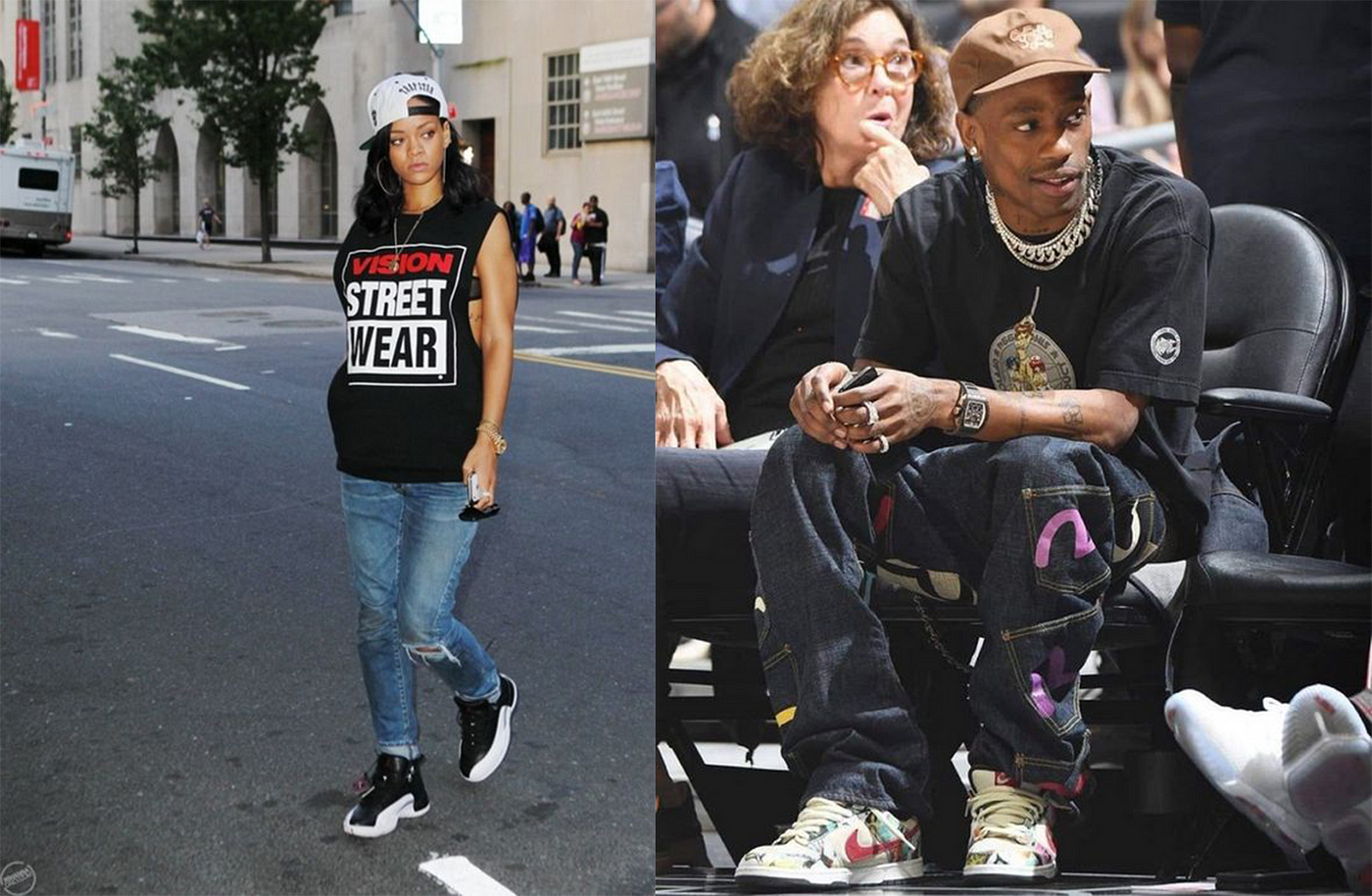
The Biebers, Hadids, Rihanna, Travis Scott, and Billie Eilish who all have followers made up of the younger demographics, often shaped the latest streetwear trends with their style and irreverent attitude.
Let’s take a look at how sneakers influenced this trend and social status.
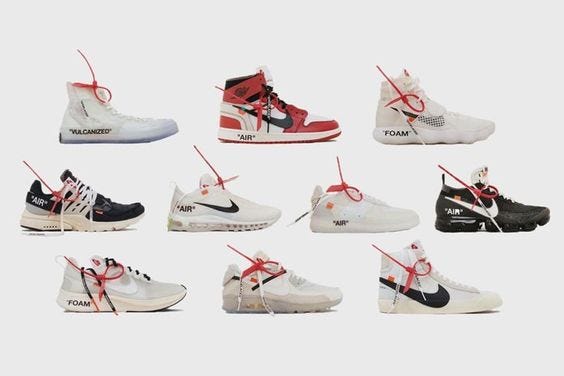
People may have thought that Air Jordans were only for basketball players and sneakerheads 10–15 years ago. This was the case until collaborations gained traction. They were the ones that completely altered the game. Kanye West and Adidas released Yeezy in 2015, followed by Virgil Abloh and Nike’s release of “The Ten” in 2017. These are two of the most prolific collaborations. Because the last one was so popular, more “The Ten” silhouettes were created in 2018, including one in collaboration with the GOAT of women’s tennis, Serena Williams.
Some collaborations worth mentioning and that completely change the game and culture are:
Travis Scott x Jordan
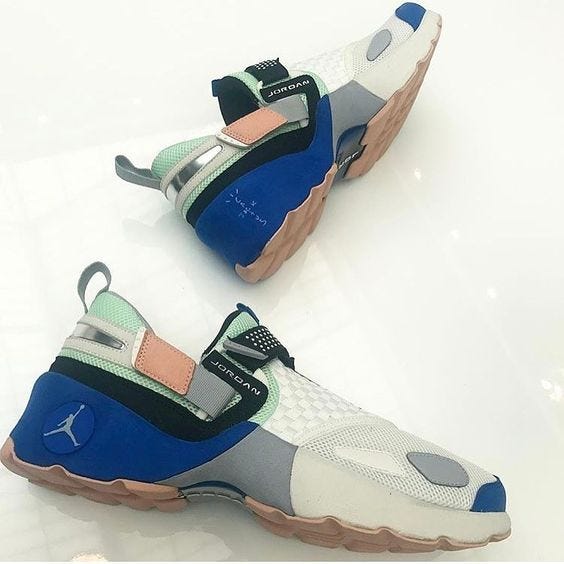
Travis Scott teamed up with Jordan brand in early 2017 to release a pair of Jordan Trunner LX “Cactus Jack”, but the pair and collaboration between these two who were going to leave a mark on the culture would happen later that year, with the release of the Travis Scott x Air Jordan 4 “Cactus Jack.”
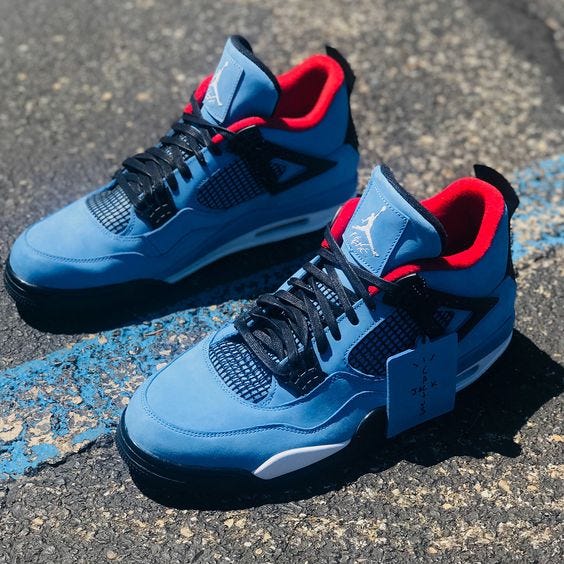
Patta x Parra x Air Max 1 Premium ‘Cherrywood’

In March of 2010, Nike collaborated with the Dutch fashion retailer Patta and the artist Pieter Parra to produce and release the Nike Air Max 1 “Cherrywood.” It is one of the most sought-after Nike collaborations in the fashion industry. This was not, however, the trio’s first partnership. A collaboration between them in the early 2000s was most likely responsible for Nike’s huge break into the Dutch footwear market.
Other notable partnerships include Nike x Commes des Garcons, Nike x Sacai, and, most recently, Adidas x Gucci.
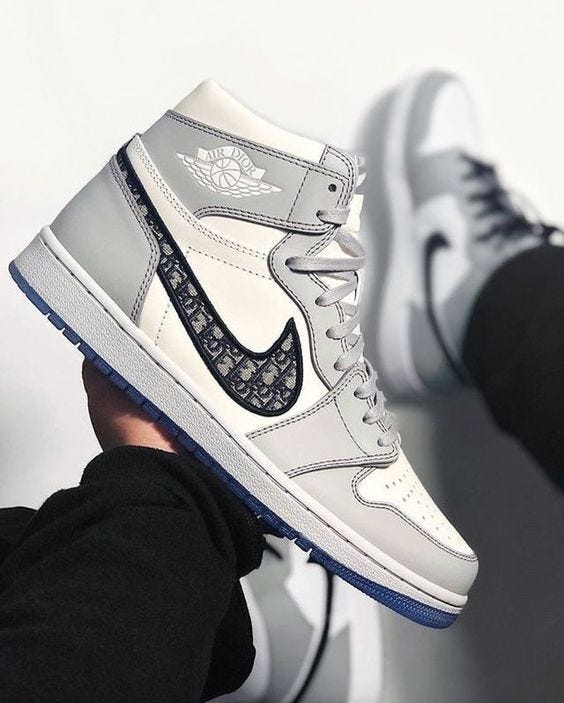
Even though these and other collaborations had a significant impact and influence on shaping the future of culture, I’d want to present you with one that, in my perspective, best demonstrates what these kinds of collaborations mean to people, industry, and social status. The Dior x Nike Air Jordan 1 was released in 2020 and is one of the most sought-after sneakers in history. Over 5 million people wanted a pair, but it’s not just the designer aspect that makes them so attractive; it’s also the exclusivity (only 5,000 pairs were available for purchase), social media hype, and a serious case of FOMO ( Fear of Missing Out ). Other hyped releases, such as Adidas Yeezy, Nike x Off-White, and so on, have employed similar strategies in the past.
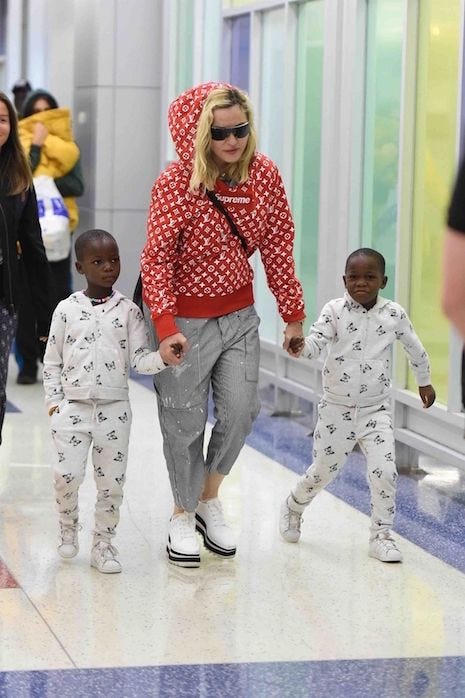
When it came to social prestige, not just sneakers but also streetwear played a role. Collaborations, particularly the most exclusive ones, began to acquire traction on apparel as well. Consider the humble hoodie. Who would have guessed that a hoodie could attain “cult status” outside of fringe hypebeast communities? Consider the Box Logo hoodie from the Supreme x Louis Vuitton collaboration from 2017. It was sold for $855 but has since received bids that are more than 300 percent higher than the retail price on resale sites. Madonna and DJ Khaled, among others, purchased the hoodie, and with these celebrities praising and being so excited about this collaboration, the demand for statement hoodies grew. Gucci, Balenciaga, and Vetements were ready to embark.
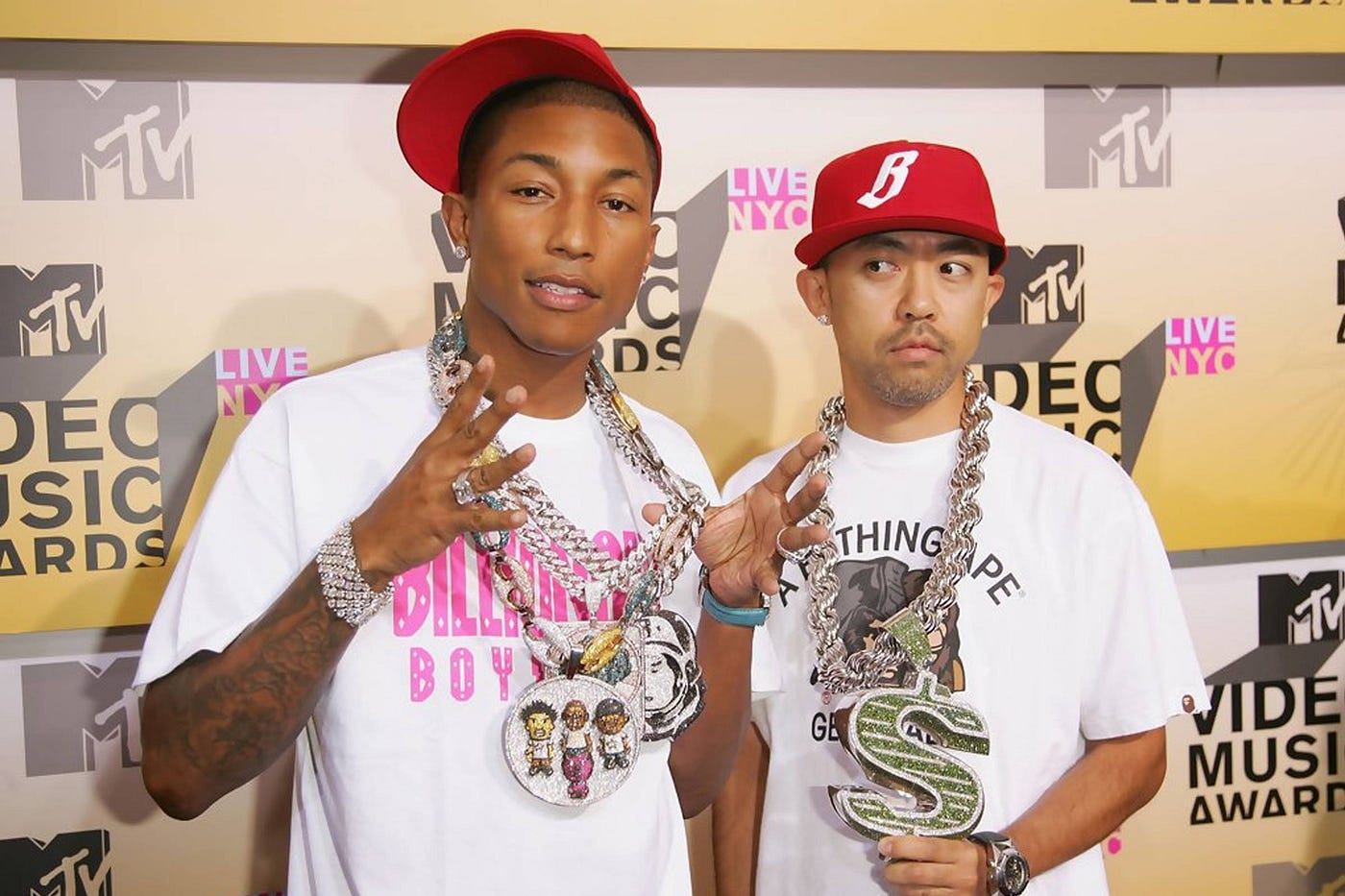
As you’ve surely noticed, sneakers and hoodies are equally popular, but there’s another streetwear feature that’s a tremendous hit, particularly in menswear. Caps. What was formerly worn to a sporting event or to hide from the paparazzi is now a show-off item. Is that Justin Bieber we’re seeing in Toronto? No, but that Valentino cap suggests he could be the heir to a multimillion-dollar New York business. I believe you get my point. Anyone can afford a $15 Nike cap if they wanted to, but not everyone would pay $405 for one that is nearly identical but has “VLTN” instead of the Swoosh.
These are some of the reasons why streetwear and sneaker culture have grown crucial in representing social status. From my perspective, they will continue to exist, but shortly, another thing and culture may take their place. As indicated by the title, NFTs. Let me explain why I believe NFTs will come to symbolize social status.
The New York Times claimed in 1999 that Americans fly to London to obtain rare A Bathing Ape ( BAPE ) jackets “with an ape camouflage pattern”. “I paid $700,” art director Ramon Yang boasted, “but it was worth it because all my friends wanted it, and I got there first.” The apes are still with us in digital form, known as the Bored Ape Yacht Club ( BAYC ), two decades later.

For example, in early August 2021, a person whose nickname is “boothy” paid $1.5 million for a digital cartoon image of a monkey with golden fur shooting a red laser beam from its eyes (BAYC #3749, currently owned by TheSandBox Game). The photograph could have been duplicated for free, but by purchasing it, the transaction was logged on the blockchain and was visible to anybody. You may be wondering why someone would spend X amount of money on an image. Let me tell you two reasons why purchasing an image is better than simply right-clicking and saving it.

*Seeing Beeple’s auction at Christie’s, where its “Everydays: The First 5000 Days” sold for no more or less than $69 million, sparked my interest in knowing more about NFTs and what motivates them. It’s simply an a.jpeg file.
If you had asked me this question a few months ago, when I knew nothing about it, I would have said that it is insane. But, even though I haven’t been in this space for many years, I can confidently say that practically every article and activity in this place is worthwhile. Why? Because purchasing some NFTs will provide you with numerous perks, such as airdrops for using various apps or technologies that have come to fruition in combination with the non-fungible tokens. Aside from the free benefits that I will discuss shortly, I believe that we should also support the artists. We should support all musicians, photographers, graphic designers, and 3D artists, but we should only buy the ones we love and like. (Also, before you invest in any project that you’ve heard is going to the moon, please conduct your study.) Do not listen to me, X, or Y because we may be incorrect. All I will ever say will be educational, stuff I’ve learned so far on various topics, and never financial advice. Thank you!)
Let’s get back to those freebies. Airdrops have been the most popular sort of reward in recent years. Airdrops are a technique of token distribution that allows users who have completed specified steps to claim tokens. The ENS airdrop was probably the earliest and most popular. On November 8, 2021, the Ethereum Name Service debuted its governance token $ENS, and those who owned a .eth domain before October 31, 2021, were able to claim the tokens based on a formula calculated based on the history of your wallet address. The formula looked like this: Age of the .ETH address, Expiry dates ( longer registration got more $ENS ), owners who have set their Primary ENS get a 2x multiplier.
The $SOS airdrop was another one that happened last Christmas and arrived as a Xmas Gift. The $SOS token is the OpenDAO’s token, and it has been used to reward people for using the Opensea platform. Many of us in space have been waiting for an Opensea Airdrop, but someone else has finally done it, and we are grateful.
People received large sums of money through these Airdrops, some of which were life-changing. And why is that? Because they have used and entered the NFT space by both purchasing and using their platforms. This is the demonstrated power of fully utilizing the NFTs space rather than simply “right-clicking” save. *
*Snippets from a previous article, NFTs: An Introduction *
Aside from the perks, the community is what I appreciate most about the NFT environment. The NFT community is one of the most significant communities on Web3 and beyond. These are only two of the reasons why I believe it is worthwhile to spend X dollars on an NFT rather than simply “right-click” saving it.
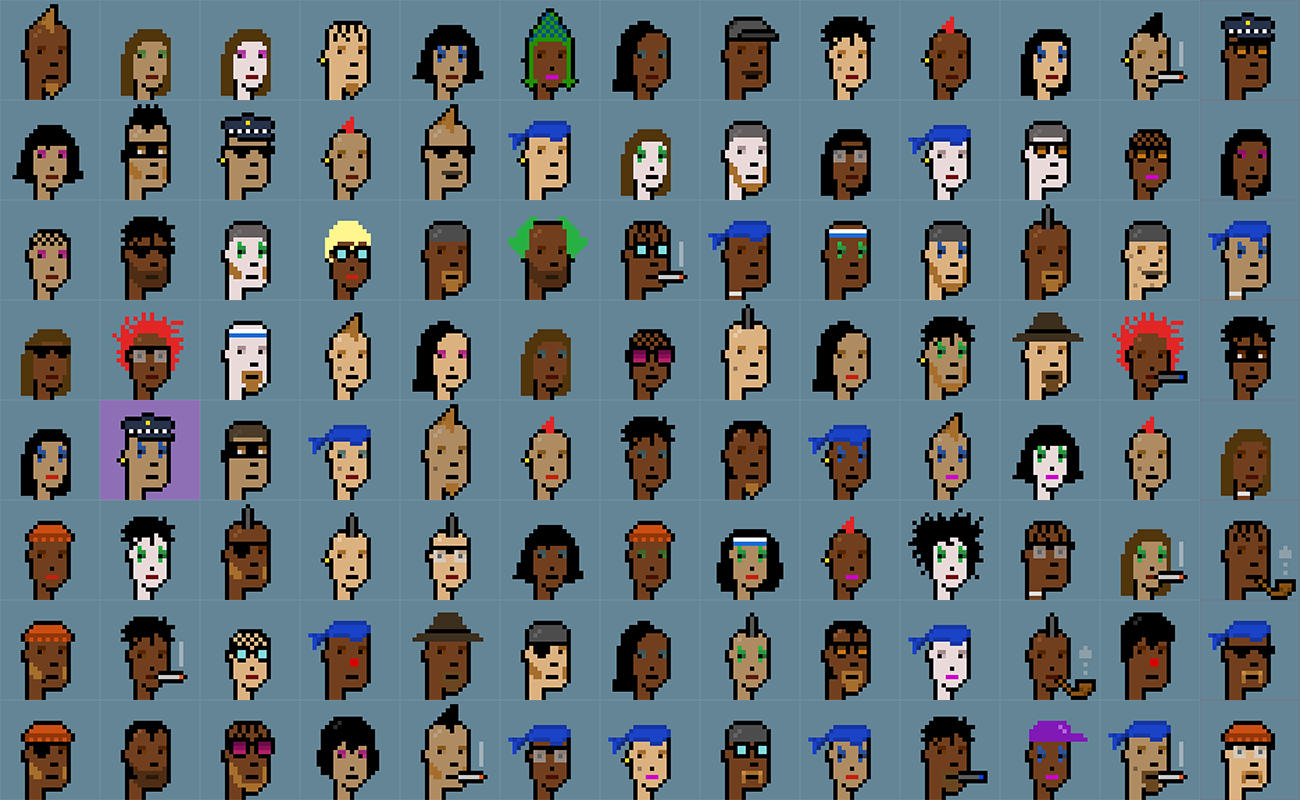
Aside from these two reasons, the social status factor is a crucial consideration when discussing NFTs and the future that is being produced. If you’re new to this space or have been following it for a while, you’ve probably heard of the Bored Ape Yacht Club and CryptoPunks collections. These two collections, among others, confer OG status on the owners, demonstrating that people were early in this area and believed in it. They can be viewed as the space’s new influencers. Why would you think that people would pay a lot of money for an Ape or a Punk? Among other reasons, because of the social prestige that they will get.
Displaying an NFT collaboration between two revered collections will be as hip and precious as wearing a sought-after pair of sneakers or a piece of clothing. As time passes and more people become aware of and genuinely grasp the power of NFTs and how they may improve our lives, it seems obvious to me that NFTs will represent the next step in displaying social status. Everyone will experience an NFT at some point in their lives. It will be required. As a result, the limited NFTs you will have, as well as the size of your collection, will be the next things people will brag about.
All of the rhetoric about the metaverse gives me even more reason to believe that NFTs will define social standing in the future. In a virtual environment, you can’t show off tangible objects, but you can show off digital ones in the form of NFTs.
Even though I am aware of the information offered in the article and a believer in the topic being discussed today, I feel that sneakers and streetwear culture will not completely disappear as a social status symbol. They will continue to exist. We shall most likely live in a time when both of these will be true. Combining NFTs with rare sneakers or streetwear items may be a huge flex and demonstrate that you are passionate about both industries and were early in each.
As is usual, I will conclude this piece by asking you a question that I would love to discuss with you on Twitter:
Do you believe NFTs will have an impact on the social status situation? Why?
Please do not hesitate to get in touch with me if you have any questions! I will eagerly respond! We can connect via Twitter!
Thanks for your time!
Have a wonderful day/night!